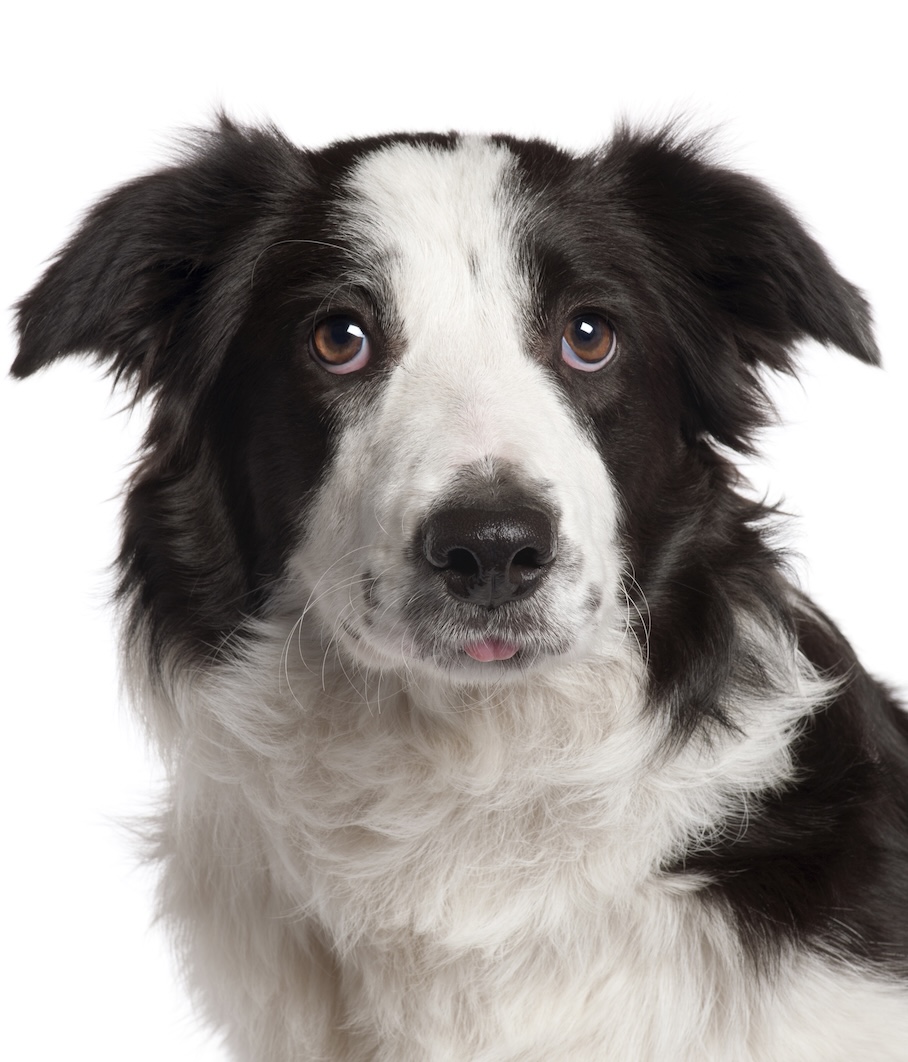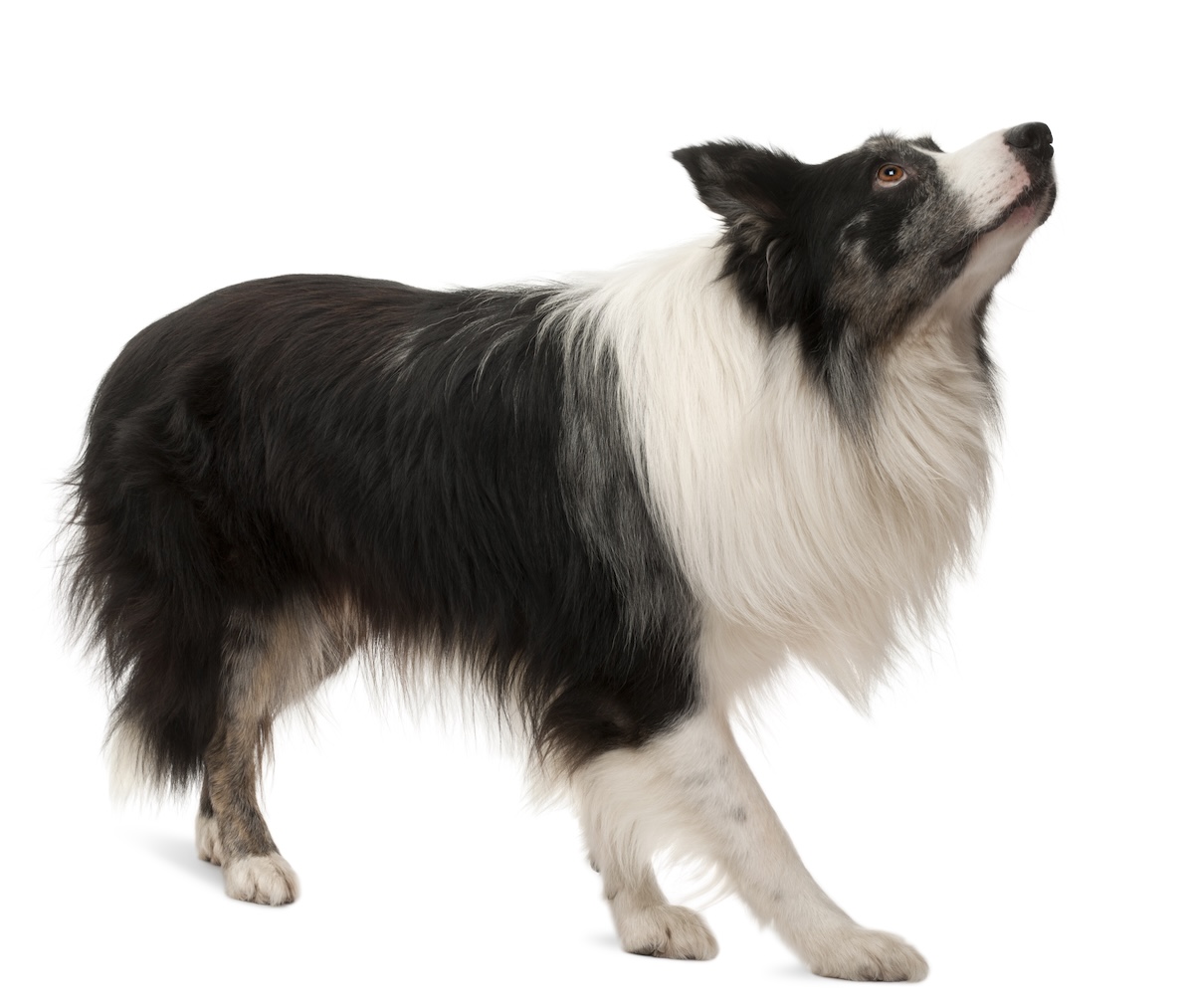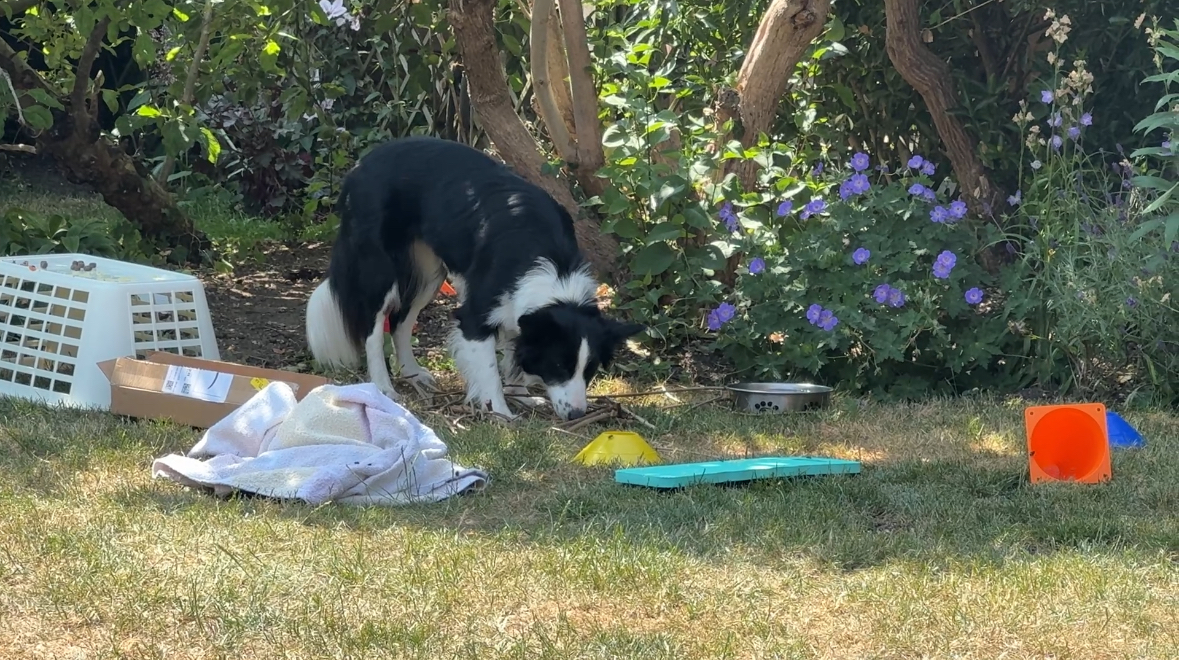If your border collie is anxious about unfamiliar people, and barks and lunges when she meets them, the first step will be to try to limit how often she practises the barking and lunging. This is because:
the more a dog practises a behaviour, the more they will continue to practise the behaviour.
So helping your dog to cope when you have visitors is a really important stage of the training for dogs that are fearful of strangers.

Why are human visitors such an issue for anxious collies?
Humans visiting their home can be extremely distressing for dogs that are anxious and fearful of unfamiliar people. Their home is their safe space, and when people visit, their safe space is suddenly not safe any more. This leads to aggressive barking, lunging and sometimes biting, in an attempt to look big and scary, to get the intruder to leave.
The problem is that this behaviour is reinforced every day when the postman or delivery drivers arrive at the home:
the postman or delivery people arrive, the dog barks and lunges at the door, and the delivery people leave. The dog believes that they have successfully scared them away.
So when visitors enter the house and don’t leave, the dog feels out of control and panicked.
As well as fear and anxiety, some collies also feel a sense of frustration caused by someone entering “their” territory, which can lead to a mix of different emotions that they find very difficult to manage. We therefore need to help anxious dogs to cope better with people entering their home, so that they don’t need to bark and lunge.

Features of the protocol that help
The following protocol is extremely successful in helping anxious collies feel happier about visitors coming into their home. The protocol features the following:
- Removing triggers for barking such as the doorbell or knocks at the door is a great start, eliminating the high arousal spikes caused by these sounds.
- Meeting the visitors outside in a neutral open space can be very helpful, giving the dog time and space to learn about the person before they invade their home.
- Ensuring that visitors don’t inadvertently threaten the dog by looking at them or attempting to touch them.
- Understanding that people entering the house is the most difficult part of having visitors for the dog, followed closely by when they stand up to leave. When people are on their feet they are less predictable so can move in any direction. Standing people make dogs nervous. Sitting people are less of a threat.
The protocol is extremely successful in reducing unwanted behaviour with visitors – read the full protocol below.
My Visitor Protocol For Anxious Collies

Goal
For your dog to cope with visitors without any barking, lunging or other aggressive behaviour. This is because the more a dog practises and behaviour, the more they will continue to practise a behaviour, and we want to teach your dog new ways of coping with visitors, and eventually learn that they are not a threat.
Preparation
- Ensure that your dog is used to free work – set it up in the garden a few times prior to having any visitors. This video explains more about free work.
- If you don’t have the space for free work (not much space is needed), then prepare a forage box – see this video for how to prepare a forage box.
- Ensure that she knows what a marker word is – see attached guide for marker words.
- If your visitor is a family member or a friend who will be visiting frequently, it would be helpful for them to bring an item of clothing that the dog can sniff so that they don’t have to come too close to the visitor to get information.
Visitor guide:
Prepare your visitors in advance to do the following:
- Behave as though your dog isn’t there at all – completely ignore her.
- This means no staring at your dog, no interacting, no treat feeding
- Even if she comes over and asks for fuss, don’t look at her or interact.
- Try not to scare her by making sudden loud noises or wide arm movements.
- Ideally create a visitor guide to give to visitors
Upon arrival
- In advance of the guest arriving, set up free work in the garden or the room in which the visitors will be.
- Ask visitors to let you know when they arrive by text or phone call – ringing the bell or knocking on the door instantly increases arousal, which we want to keep low.
- Ask visitors to wander up and down the street outside your house and not look at your dog or speak to you until you speak to them.
- Keep your dog a few metres behind for 2- 5 minutes, giving her a chance to air scent the visitors.
- If she wants to stop and sniff, let her – sniffing lowers arousal.
- Gradually catch up to the visitors, giving your dog space from the visitor if possible, but walking parallel to them.
- Remind them not to look at your dog and only talk quietly and calmly.
- If your dog barks, drop back a bit and allow the visitor to walk ahead then catch up gradually again.
- After 5 minutes (ish), head back to the house.
- Ask the visitor for an item of their clothing or from their car, if possible, to add in to the free work set up – this is particularly useful if the visitor is someone that may be visiting frequently.
- Visitors go in first and get settled by sitting down. Sitting at a table can be good if your dog feels threatened by eye contact.
- Bring your dog in on a long line, you could do the 123 game as you bring her in (https://youtu.be/R1_AApqwNIM?si=17Ce9TCGwTA9cJtI)
- Encourage her to sniff the free work set up
- Her handler can sit down as well and try to keep the lead loose and relaxed.
- Ignore any barking
- Once she is settled, every time she looks at, or interacts with the visitors in any way, use her marker word and toss her a treat.
- Do NOT ask visitors to feed her – this causes conflict – she wants the treat but is suddenly closer than she wants to be and this can cause panic and aggression.
- Take your dog into another room BEFORE visitors stand up to leave. Ideally somewhere where she can’t hear or get worked up.
For more information about how to help anxious collies, please don’t hesitate to get in touch.

